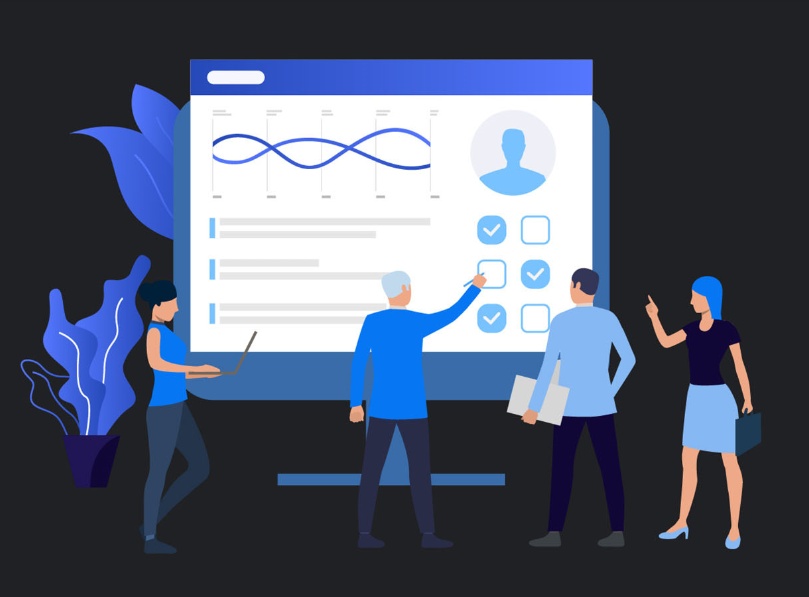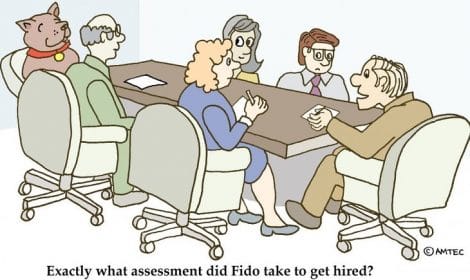Why Job Descriptions Always Matter
Written by Carol Ferrari
June 11, 2020

Have you ever been in a situation where you realize that you didn't hire the right person for the job? I know I have.
If you’re like me, you felt frustrated and disappointed, for yourself as a manager and for the employee, too. Not only is there an impact to your organization, but there’s an injustice to that individual. And in many cases, you’re not in a position to make a change without considerable pain for all involved. Not a great situation, especially when you consider the cost of hiring the employee. I have seen reports that say it can cost anywhere from $10,000 to over $300,000 to acquire a new employee - based on things like recruiting time and costs, background checks, resume verifications, onboarding and training. The list goes on.
How important is the job description?
Hiring the right person for a role starts with the right job description. Do you always start from scratch and create one that's exclusive to your department? As the hiring manager, I opened a Word doc and started creating the job description - not even thinking about locating the already-approved company job descriptions.
Do you really know what skills and requirements are needed? Are there any corporate requirements? Many times, a job description is written for a person and not the role – another “don’t do” when it comes to creating job descriptions.
Do you know what other companies are including in their job description for similar roles? Have you thought about how important that job description really is and connected the dots to compensation, productivity, and performance?
The right job description is essential to getting pay right
If you don’t get the skills and requirements right, it impacts how much you pay for a role. A job description provides your colleagues in HR and compensation roles with the necessary framework for benchmarking a job against the external marketplace and making sure you get pay right. If the job description doesn’t accurately describe the role and outline the requirements, you not only risk hiring for the wrong skill set but you risk paying too much, and sometimes too little, for the role which can negatively impact your compensation structures.
[Note: there are tools to help you automatically link a job description to your market pricing. Click here for a demo of CompAnalyst®.]
Hiring: Matching the right person to the right role
If you want to increase your success rate when hiring you need to get the skills, requirements and certifications agreed upon for a role before you start recruiting. Also, you need to make sure the job description is the basis for the job posting. Some companies have restrictions due to regulations, mandating that you make the job posting the same as the job description. But many of us don't have those restrictions and run the risk of creating a job posting that deviates from the job description. Best practice, use the job description as the basis for the posting but modify the language to make it more “friendly” and incorporate keywords that will help your posting be found on the major job posting sites. It should be easy for you to take your job descriptions and make a job posting out of it.
Retention: Creating the right hierarchy for promotion and growth
Has this happened to you? You hire for a hot role in your department (one with the compensation going up) only to realize that you now have a new hire that is making quite a bit more than others in the group. Pay inequity, when unjustified, can create a lot of problems within a department and is something you should try to avoid. When you start the hiring process for a new role, especially a hot role, you should also revisit the job descriptions and compensation structures within your group. Take the time to update them to reflect current skills and requirements at least yearly. And don’t do it alone – work with your HR or compensation person and do some analysis to determine if those lower salaries are justified.
Job descriptions have value beyond recruitment.
The job description is a critical element in performance reviews. It should be a major factor in how you rate the performance of the individual in that role.
It helps level set and eliminates bias in the review process. It can act as a guide to how you coach, mentor, and develop the employee as well. And it can provide parameters for merit increases.
OK, so how do you do this at scale?
Good news, there are tools that allow you to streamline the job description creation and management process. Without a formalized job description management tool, many companies find there’s a chaotic process which leads to outdated job descriptions and inconsistencies across the organization or locations, with no formal structure to manage and approve them effectively.
It should be easy for you to identify approved job descriptions. If you need to create one, you should be able to leverage existing content – even job postings on the web. Why recreate the wheel if there’s something good already out there?
Collaboration and communication between hiring managers, HR, and other stakeholders in the hiring process is key to making sure job descriptions are accurate and that you get pay right. Without a tool that simplifies the creation, sharing, review and approval of job descriptions, you run the risk of descriptions that don’t accurately represent the roles. And that’s how you end up with employees in the wrong role.
Want a cost-effective tool to help you manage your job descriptions no matter what size company you have? Click here for a demo of our JobArchitect™ job description management software.


Download our white paper to further understand how organizations across the country are using market data, internal analytics, and strategic communication to establish an equitable pay structure.
Insights You Need to Get It Right












